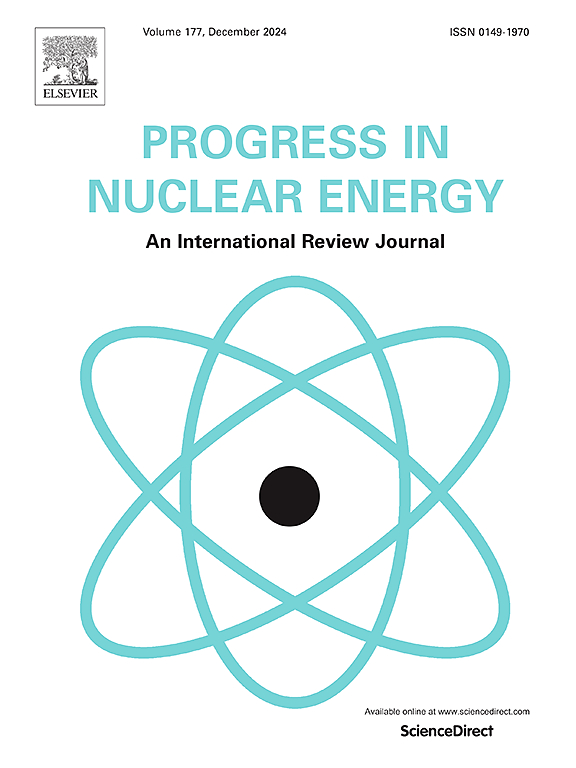Rational approximations for multi-energy group stiff fractional point kinetics equations
IF 3.3
3区 工程技术
Q1 NUCLEAR SCIENCE & TECHNOLOGY
引用次数: 0
Abstract
The statistical distribution of neutron density on nuclear reactors offers the benefit of having steady power for extended periods. However, changing the fuel and control rods could cause perturbations in this distribution. Therefore, it is necessary to investigate and analyze these perturbations to ensure the safe operation of reactors using a mathematically significant model of the Multi-Energy Group Point Kinetics Equations (MEG-PKEs). In this work, a multi-group of delayed neutrons (MGDN) and the stiff model of the multi-energy group fractional point kinetics equations (MEG-FPKEs) have been used to explore the behavior of neutron flux density. The stiff MEG-FPKEs have been solved with MGDN using various developed Padé approximations. Step, ramp, and sinusoidal reactivities, in addition to the nonlinear situation of reactivity in the presence of temperature feedback, are numerically examined using the fractional model. The developed mathematical model’s consistency, validity, and computational technique have been evaluated. Comparisons between the Padé approximations and the benchmark Heaviside’s expansion formula (HEF) prove complete agreement in the numerical results of 1EG-PKEs. In addition, Padé approximations reduce the computational CPU time compared to the benchmark HEF. Furthermore, the fractional order of the sub-diffusion and super-diffusion processes are investigated for different reactivity scenarios.
求助全文
约1分钟内获得全文
求助全文
来源期刊

Progress in Nuclear Energy
工程技术-核科学技术
CiteScore
5.30
自引率
14.80%
发文量
331
审稿时长
3.5 months
期刊介绍:
Progress in Nuclear Energy is an international review journal covering all aspects of nuclear science and engineering. In keeping with the maturity of nuclear power, articles on safety, siting and environmental problems are encouraged, as are those associated with economics and fuel management. However, basic physics and engineering will remain an important aspect of the editorial policy. Articles published are either of a review nature or present new material in more depth. They are aimed at researchers and technically-oriented managers working in the nuclear energy field.
Please note the following:
1) PNE seeks high quality research papers which are medium to long in length. Short research papers should be submitted to the journal Annals in Nuclear Energy.
2) PNE reserves the right to reject papers which are based solely on routine application of computer codes used to produce reactor designs or explain existing reactor phenomena. Such papers, although worthy, are best left as laboratory reports whereas Progress in Nuclear Energy seeks papers of originality, which are archival in nature, in the fields of mathematical and experimental nuclear technology, including fission, fusion (blanket physics, radiation damage), safety, materials aspects, economics, etc.
3) Review papers, which may occasionally be invited, are particularly sought by the journal in these fields.
 求助内容:
求助内容: 应助结果提醒方式:
应助结果提醒方式:


